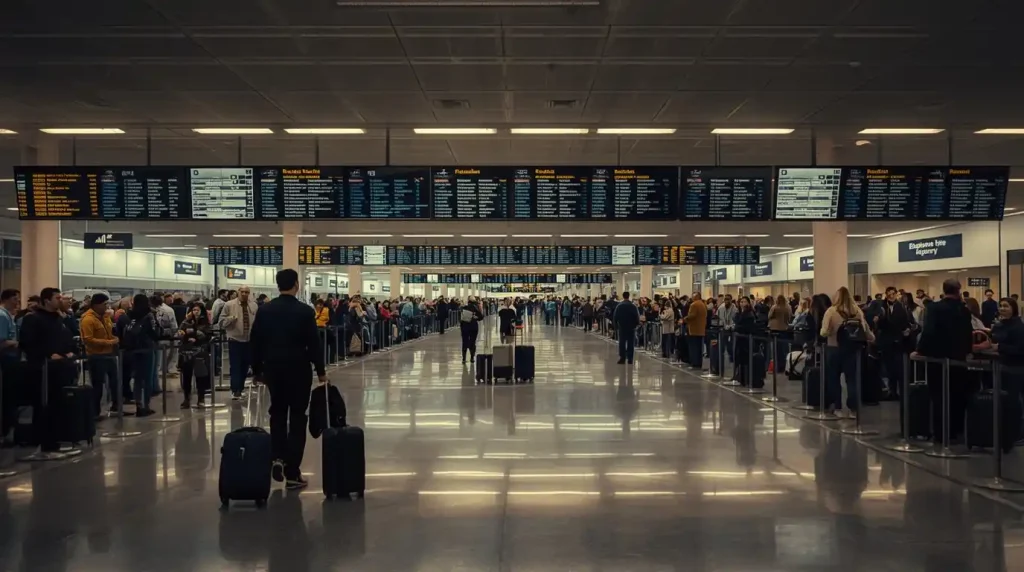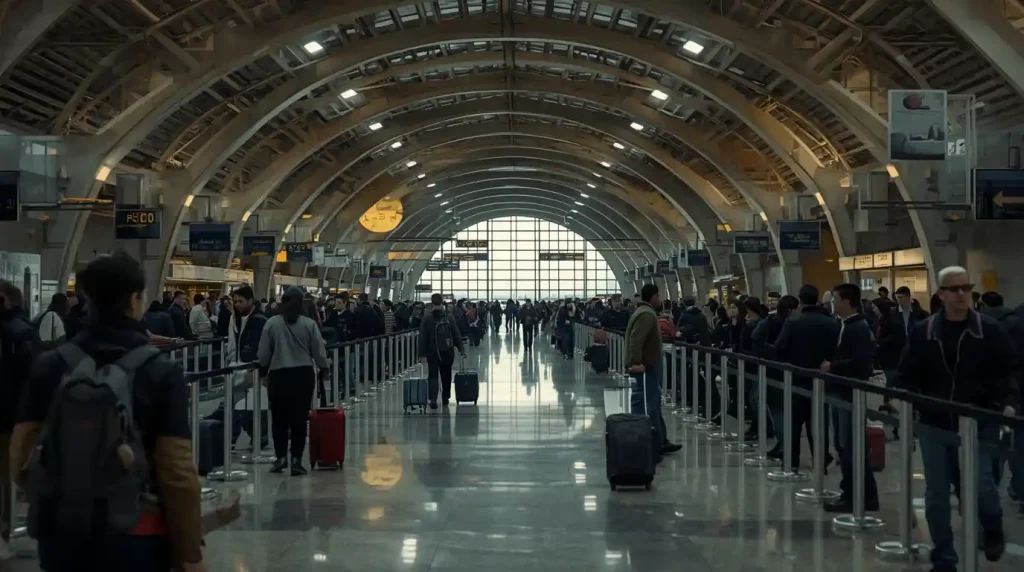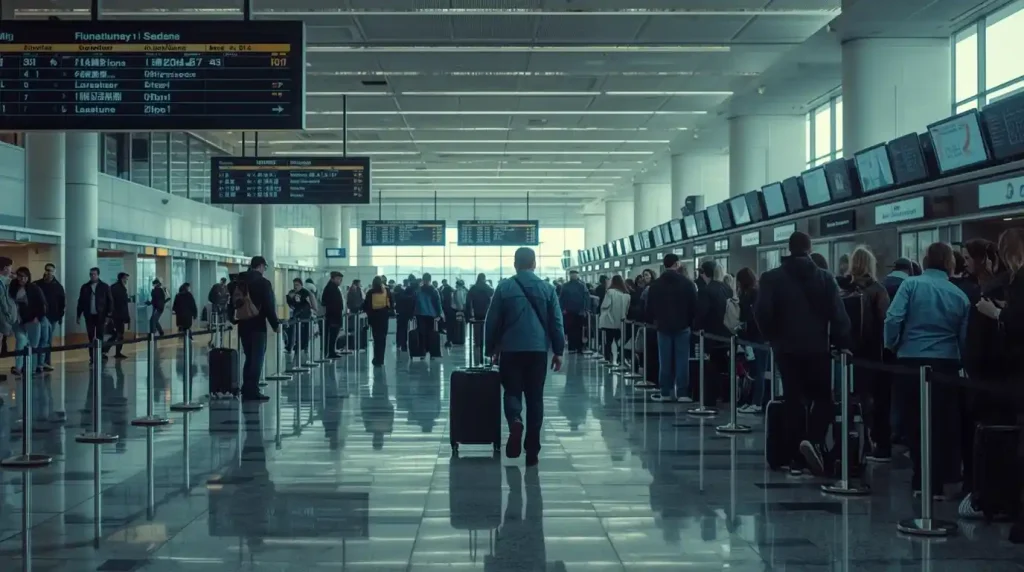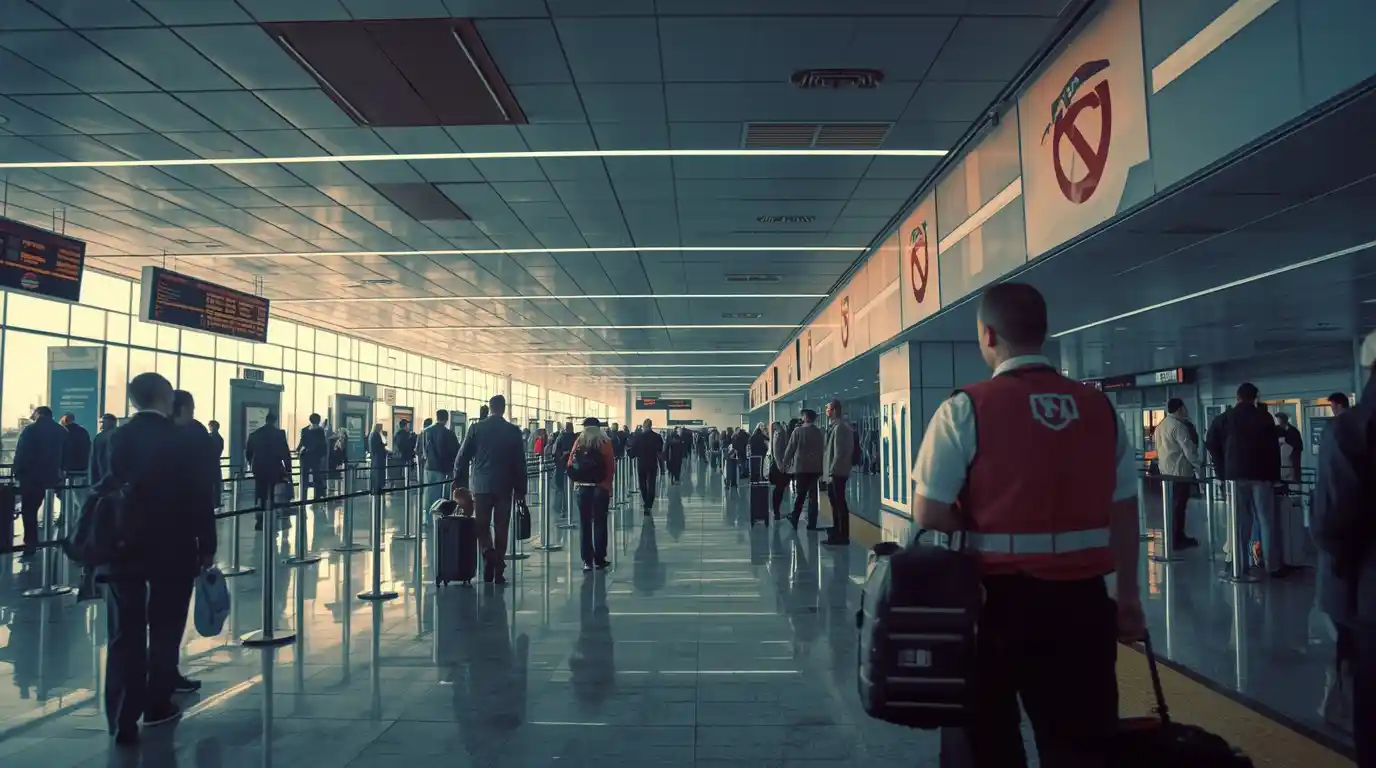A Morning of Chaos: Screens Go Dark Across Europe
Imagine it’s Saturday morning. You’ve been saving for this vacation for months. You arrive at the airport, suitcase in tow, excitement buzzing. But instead of the usual organized chaos, you’re met with pure confusion. The departure boards are blank. Long, snaking lines are at a complete standstill. Airport staff look just as bewildered as the passengers. No one can check in. No one can drop bags. The entire system, it seems, has simply… stopped.
This wasn’t a scene from a movie. This was the reality for tens of thousands of travelers across major European hubs on September 21, 2025. A sophisticated and devastating cyberattack targeted a critical linchpin of the aviation industry, setting off a chain reaction of delays and cancellations that stretched from London to Lisbon. It wasn’t an attack on a single airline or one airport, but a surgical strike on the very software that allows them to talk to each other. This is the story of that day, the frantic race to fix it, and the profound lessons we must all learn from it.
cyberattack – The Hidden Target: Why a Single Software Provider Caused Continental Chaos
To understand the scale of this disruption, you need to understand a simple truth about modern air travel: it’s a ecosystem of interdependence. Airlines, airports, ground handlers, and security agencies all rely on a seamless flow of data. Much of that data flows through a handful of major software providers who develop and manage the critical systems for check-in, baggage handling, and flight management.
The hackers, in a display of brutal efficiency, didn’t waste time attacking heavily fortified individual airline servers. Instead, they identified a single point of failure: a major software provider whose technology is embedded in hundreds of airports across the continent. By compromising this one vendor, they effectively crippled the operational backbone of European aviation. It was the digital equivalent of blocking a major highway intersection; traffic backs up everywhere, no matter your final destination. This attack laid bare the immense vulnerability that comes with consolidation and interconnectedness. Our global infrastructure often relies on unseen, single points of failure, and when they break, the effects are immediate and catastrophic.

cyberattack – On the Ground: The Human Toll of a Digital Attack
While news reports talk about “systems” and “outages,” the real story was written on the faces of stranded passengers. Families with young children sat on floors, unsure if their dream holiday would ever begin. Business travelers frantically tried to dial into meetings that were now impossible to reach. Elderly passengers were confused and anxious. The airport, a place of transition and excitement, became a holding cell of frustration and uncertainty.
The human impact of this digital failure was immense. It meant missed weddings, postponed surgeries, lost business deals, and shattered vacations. It highlighted our profound dependence on digital systems functioning flawlessly. For every error message on a check-in kiosk, there was a human story of disappointment and stress. The incident serves as a stark reminder that cyberattacks are not victimless crimes against faceless corporations; they are real-world events with deep human consequences, disrupting lives and causing tangible economic and emotional harm.
cyberattack – The Heroic Response: How IT Teams and Ground Crews Fought Back
As passengers struggled with the “what,” an army of IT professionals, airport operations teams, and airline staff launched into a frantic “how.” How do we fix this? How do we get people moving? How do we maintain safety when our digital eyes are blind? The response was a monumental effort of analog workarounds and sheer human grit. With digital check-in dead, staff resorted to manual, paper-based processes. They hand-wrote boarding passes. They tagged bags by hand and prayed the system would reconcile them later. Gate agents used loudspeakers and whiteboards to communicate flight information.
Behind the scenes, a coordinated cyber-firefight was underway. Teams from the affected software provider worked through the night to identify the breach, isolate the malicious code, and develop a patch. National cybersecurity agencies across Europe shared intelligence, trying to trace the attack’s origin. It was a slow, painstaking process. Rebooting a continent’s worth of mission-critical systems isn’t like restarting a laptop; every step had to be checked and double-checked to prevent further data corruption or a second attack. This section is a testament to the often-invisible work of these professionals whose expertise and tireless effort eventually pulled the aviation system back from the brink.

cyberattack – The Uncomfortable Truth: This Will Happen Again. Are We Ready?
The systems were eventually restored. Flights, after a painful 48-hour backlog, slowly returned to normal. But the uncomfortable question remains: was this a wake-up call or just a dress rehearsal? Cybersecurity experts have warned for years about the fragility of critical national infrastructure. This attack proved them right. The unsettling truth is that this will not be the last time. The incentives for hackers—whether state-sponsored actors seeking to cause disruption or criminal gangs extorting massive ransoms—are too high.

The question is not if another attack will happen, but how we will be better prepared for it. This incident must serve as a catalyst for change. It demands a fundamental shift in how we think about cybersecurity, moving from a reactive posture to a proactive, resilient one. We cannot simply build higher digital walls; we must assume the walls will be breached and have robust, well-rehearsed plans to keep society functioning when they are. The lessons from this September weekend must be learned, and learned quickly, because the next attack is already being planned in some dark corner of the internet.
Beyond the Airport: What This Means for Everyone in a Connected World
You might read this and think, “I’m not a pilot or a software engineer. This doesn’t affect me.” But that is the most dangerous assumption of all. This airport hack is a microcosm of our entire modern world. The same principles of interconnectedness and single-point dependence apply to our power grids, our financial networks, our healthcare systems, and our communication platforms. The vulnerability exposed in Europe’s airports exists in countless other sectors.
The takeaway for every individual and every business leader is clear: digital resilience is no longer a technical issue; it is a foundational component of modern life. For individuals, it means understanding that our convenience comes with a layer of systemic risk. It means having digital backups of important documents and maintaining a little old-fashioned patience when technology fails. For businesses and governments, the mandate is far greater.
It requires significant investment in cybersecurity, the diversification of software suppliers to avoid single points of failure, and the constant testing of manual backup procedures. The goal is not to prevent every attack—an impossible task—but to build systems and societies that can withstand the shock and keep moving forward, even when the screens go dark. The European airport hack of 2025 wasn’t just a news story; it was a warning. The future will belong to those who choose to listen.

Table of Contents
Reference Website:
https://edition.cnn.com/2025/09/21/europe/europe-airports-hack-operations-intl
Our Related News Website:
Sports: Sport Flash
World News: The News Grid
Environment News: Eco Alert
Business News: Biz Trend Now
Dailt News: Unbiased Daily
Realm News: Real Time Realm
Retrun to our Homepage
